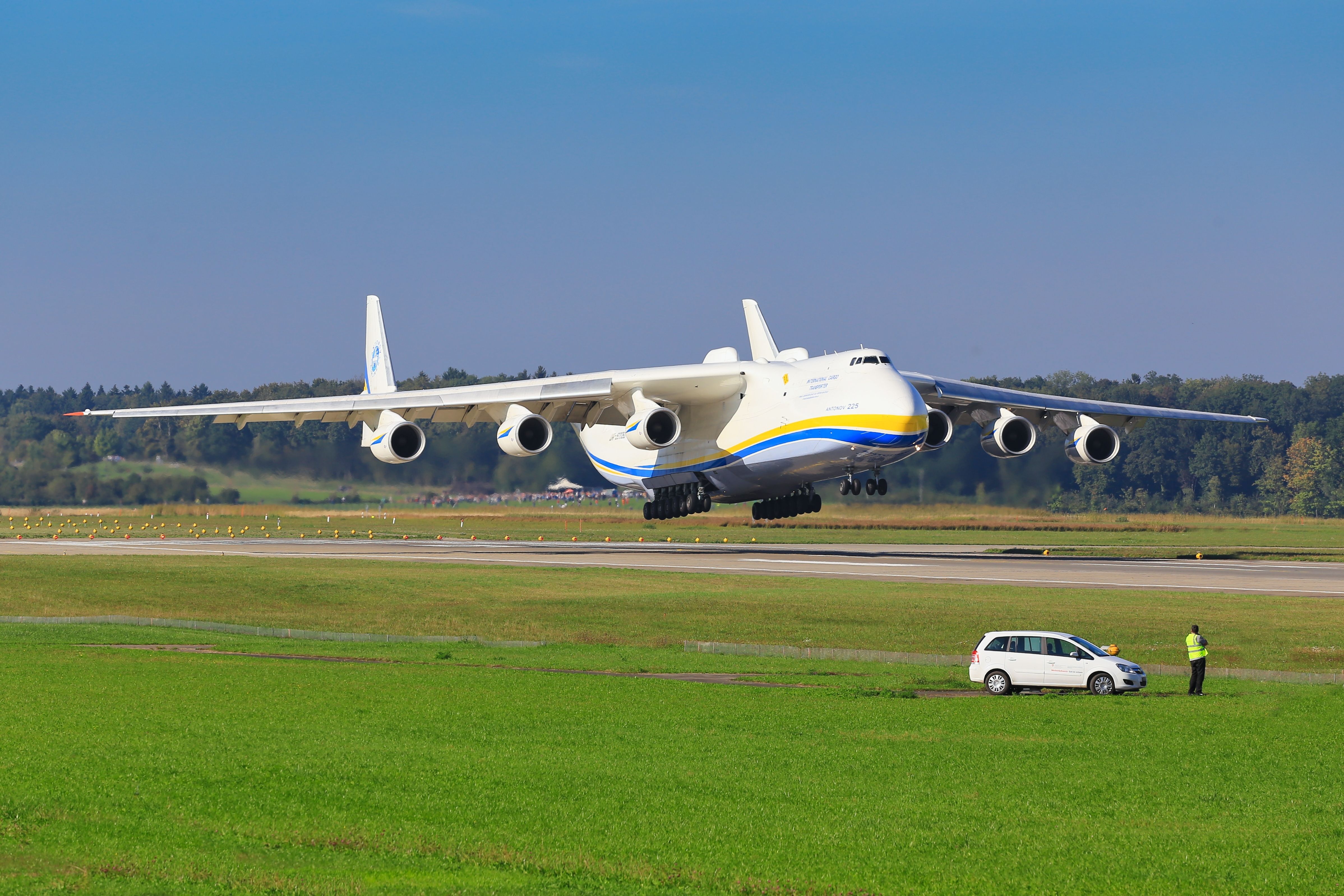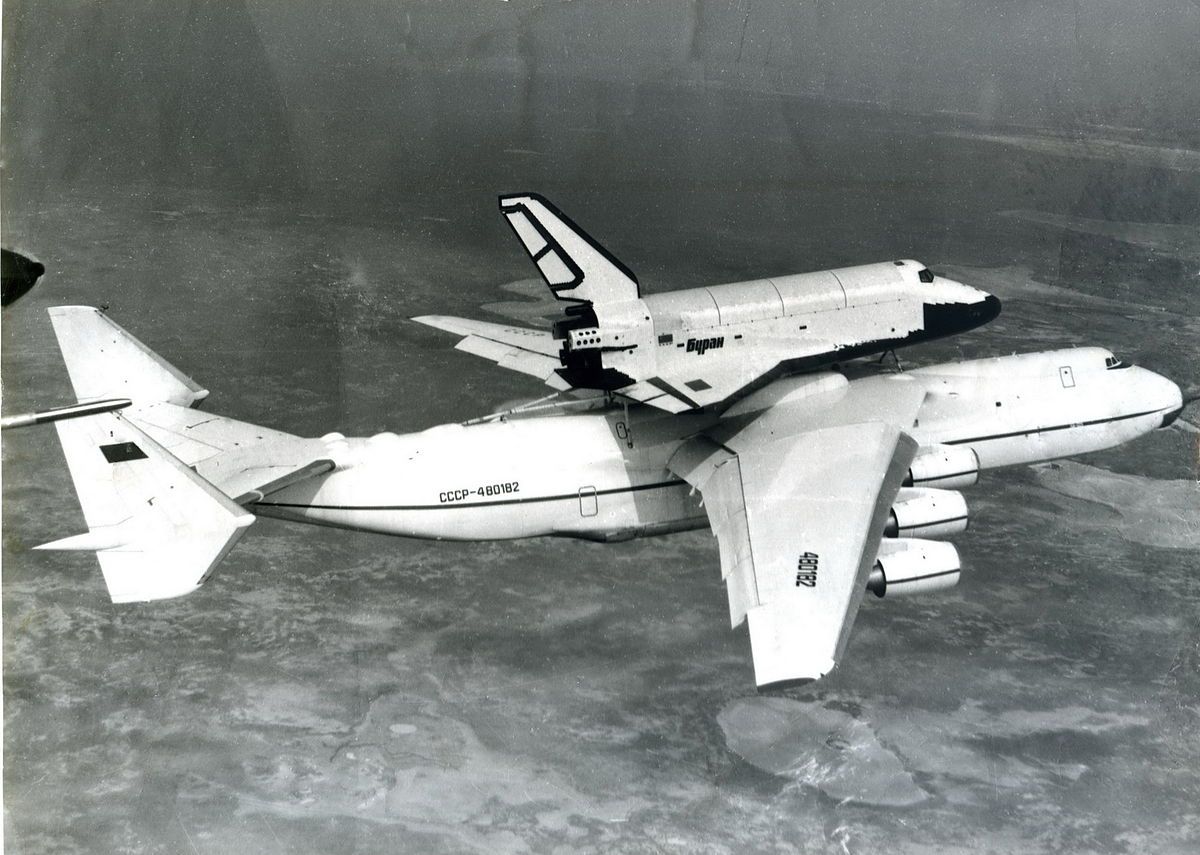Summary
- The Antonov An-225 Mriya, designed to transport the Buran spacecraft, features unmatched specifications.
- The An-225, with a 640-tonne takeoff weight and 1,300 cubic meter cargo compartment, holds over 240 world records in aerospace technology.
- Despite being destroyed in 2022, the An-225 remained relevant, even delivering essential medical supplies during the pandemic.
On May 13th, 1989, a pivotal moment in aviation history was entered into the logbooks as the Antonov An-225 Mriya, the world’s largest aircraft, successfully carried the Soviet Buran spacecraft in flight for the first time. This remarkable event demonstrated the immense capabilities of the newly developed An-225 and marked a significant achievement in aerospace engineering and collaboration.
The Antonov An-225 Mriya or Mrija (Ukranian for “dream”) was designed as a replacement for the Myasishchev VM-T Atlant, according to letadlanaplatne.cz
Contextual backdrop: The era of the Soviet space program
Origin and design purposes
Developed in the 1980s by the Antonov Design Bureau in the Ukrainian SSR, the Antononv An-225 was designed with a very specific mission in mind: to transport the Buran spacecraft. This strategic need for a super heavy-lift transport aircraft inspired the modification of the existing An-124 design into what would become the An-225 and led to its unmatched specifications. The aircraft features a 32-wheel landing gear system and an enlarged fuselage to accommodate the Buran, which it carried externally. According to the Antonov Company’s history, the An-225’s design reflects a remarkable achievement in terms of scalability and adaptation in aerospace engineering.
Technical specifications and capabilities
The An-225 Mriya, named after the Ukranian word for ‘dream,’ stands out with its impressive length of 84 meters and a wingspan of 88.4 meters. Powered by six turbofan engines, it boasts a maximum takeoff weight of 640 tonnes – the highest of any aircraft in operational service. As per specifications listed by Antonov’s official releases, the An-225 holds the record for the largest wingspan of any aircraft, and its cargo compartment is a cavernous 1,300 cubic meters in volume. The Antonov An-225 is a marvel of engineering, and the design itself included a twin-tail configuration to accommodate Buran’s wing span and control surfaces during integrated flight operations.

Related
The Simple Flying Podcast Episode 189: Antonov An-225 Work & Huge Widebody Orders
Join Jo and Tom for the latest from the world of aviation.
The monumental flight on May 13th, 1989
Flight details and execution
On that historic day, the Antonov An-225 took off from the Baikonur Cosmodrome in Kazakhstan with the Buran spacecraft securely attached to its back. The flight was more than just a demonstration of the aircraft’s capabilities; it was also a significant test of aerospace logistics and engineering. This was crucial for showing the aircraft’s lifting capacity as well as for proving its ability to fly smoothly with such significant aerodynamic changes. The flight itself lasted over two hours, providing vital data on the aircraft’s performance under unconventional flight conditions.
Infographic: Simple Flying
Significance and global impact
The successful test flight was a demonstration of Soviet ingenuity at the height of the space race. As detailed in a report by Popular Mechanics, the event was seen as a notable moment in the Cold War, showcasing the technological prowess of the Soviet aerospace industry to the world.
Broader technical insights into the An-225
Innovations and world records
Throughout its service life, the An-225 has broken over 240 world records, including those for airlifting the single heaviest cargo item — a 247-ton generator — and for carrying the largest ever item, as noted by Guinness World Records. These achievements underscore the An-225’s noteworthy contributions to aerospace technology and its unparalleled capabilities in heavy-lift transport.
- Largest aircraft by weight ever – “The aircraft with the highest standard maximum takeoff weight is the Antonov An-225 “Mriya” (Dream), originally built at 600 tonnes (1.32 million lb). In 2000/2001, its floor was strengthened, increasing the maximum takeoff weight to 640 tonnes (1.41 million lb). A heavy-lift version of the standard Antonov An-124 “Ruslan” cargo plane, only two of these behemoths were ever built.”
- Heaviest item airlifted – “The heaviest item airlifted is a power plant generator which weighs 187.6 tonnes (375,200 lb) and was achieved by Antonov Airlines 225 “Mriya” aircraft – the biggest aircraft in the world, at Frankfurt Hahn Airport, in Frankfurt, Germany, on August 11th, 2009.”
- Widest wing span of any aircraft, at 88.4 m (290 ft).
- Longest cargo piece flown by aircraft – “In 2011, Dutch logistics provider Geodis Wilson flew the longest pieces of cargo ever transported by air. The items were wind turbine blades for its customer LM Wind Power, each measuring 42.1 metres in length. They were transported from the manufacturing plant in China to Denmark using a giant Antonov An-225 aircraft. The aircraft had to land at a military airstrip – the only airport in Denmark able to handle such a large cargo.”

Related
Did You Know The World’s Biggest Plane Set 123 Other Records?
The Antonov An-225 was a world-beater in more ways than just its sheer size.
Enduring legacy and continued relevance
The An-225 in modern times
Despite the dissolution of the Soviet Union and the official cancelation of the Buran program, the An-225 remained in operation for decades. It was frequently called upon to transport oversized payloads for various global industries and humanitarian missions. During the COVID-19 pandemic, the aircraft was vital in delivering essential medical supplies across continents, highlighting its ongoing relevance. In 2022, it was confirmed that the aircraft was destroyed by Russian forces in the early days of the war in Ukraine, sitting in a hangar at Hostomel Airport, though it was fully operational and flight-ready at the time.
Photo: Oleksii Samsonov | Shutterstock
Education and cultural impact
Despite its untimely destruction, the story of the An-225 continues to inspire a new generation of engineers and aviators. Museums and education programs often highlight the An-225’s contributions to aviation and space exploration, cementing its place in history. The plane was even featured on the silver screen in the 2009 eco-disaster thriller 2012.
Reflecting on a historic day in aviation
As we commemorate the anniversary of this significant flight, it’s crucial to acknowledge the foresight and ingenuity that characterized this achievement. The Antonov An-225 and the Buran spacecraft’s joint flight pushed the boundaries of what was technically possible and symbolized a peak in the space race era’s technological pursuits.
Were you shocked to learn about the untimely destruction of this historical marvel in 2022? For more in-depth analysis and updates on events in aviation history, follow our series and join the conversation in the comments or on our social media platforms.




